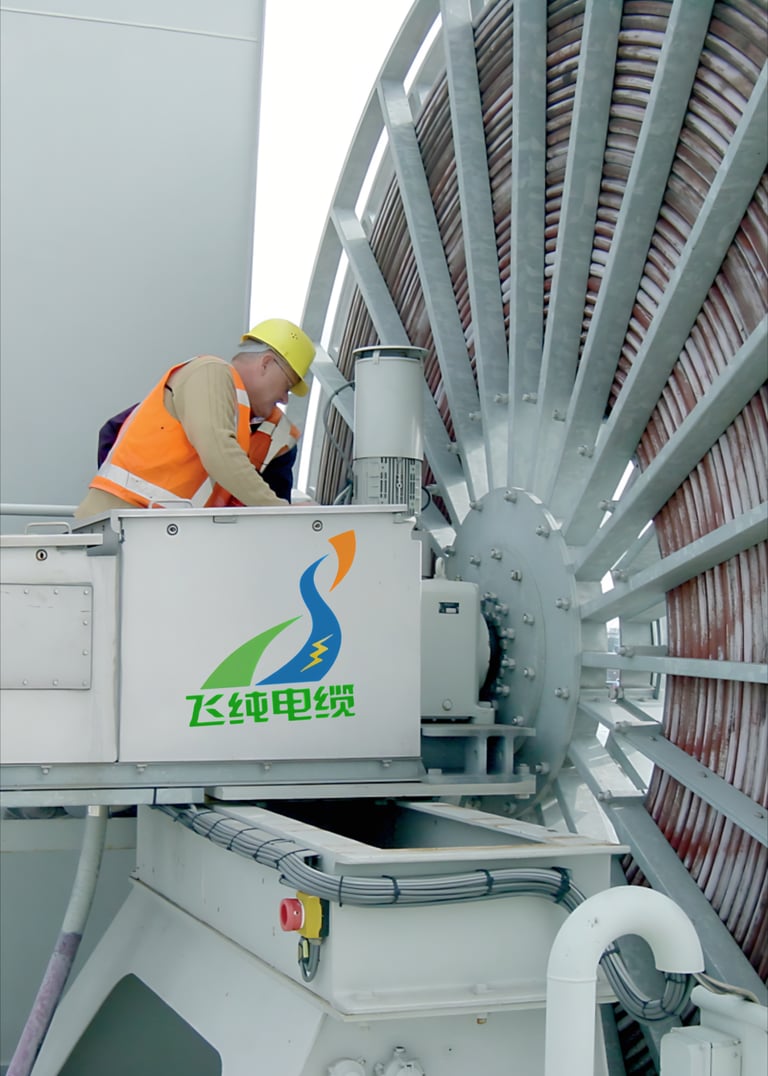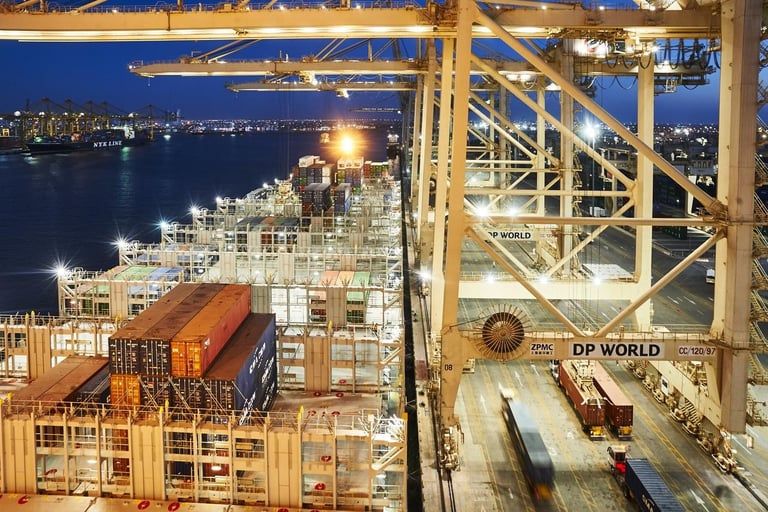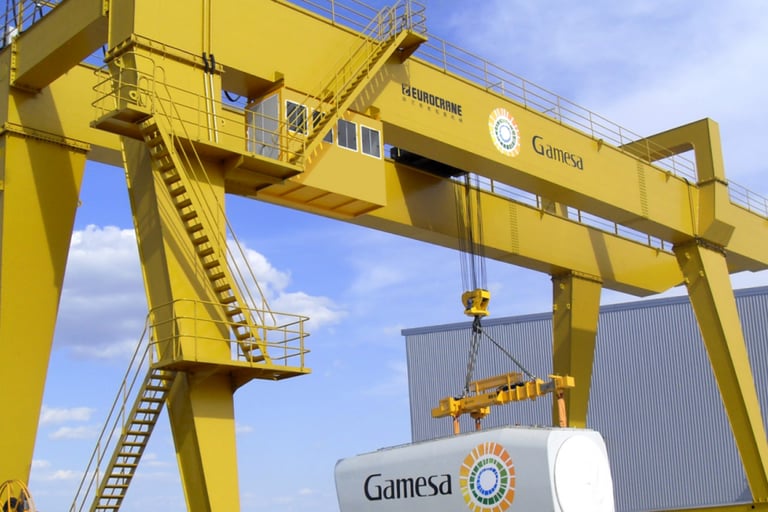📞+86 153 7530 2641 📧 hongjing.Wang@feichuncables.com

Comparative Analysis of TROMMELFLEXKSM-S (N)SHTOU-J 3x150+3x70/3 vs. 3x240+3x120/3 in Port Crane Applications
Explore the application differences between TROMMELFLEXKSM-S (N)SHTOU-J 3x150+3x70/3 and 3x240+3x120/3 cable models in Australian and global ports. Compare load capacity, cost-efficiency, and suitability for cranes, reeling systems, and automated terminals.
hongjing.Wang@Feichun
7/8/20259 min read
Introduction: Growing Demand for High-Performance Cables in Global Ports
The modern shipping industry has witnessed unprecedented growth in cargo volumes, with global container throughput exceeding 800 million TEU annually. This surge has intensified the demand for robust, reliable electrical infrastructure in ports worldwide. At the heart of this infrastructure revolution lies the critical role of high-performance reel cables, particularly in powering the sophisticated crane and automation equipment that defines contemporary port operations.
Crane and automation equipment systems are entirely dependent on the performance characteristics of their reel cables. These cables must endure constant flexing, torsional stress, and environmental challenges while maintaining consistent power delivery. The consequences of cable failure in port operations extend far beyond equipment downtime – they can disrupt entire supply chains, delay vessel schedules, and result in substantial financial losses.
Across diverse maritime environments, from Australia's resource-rich ports to the automation-intensive facilities of Southeast Asia and the weather-challenged terminals of Northern Europe, port operators share common concerns regarding cable performance. The primary requirements consistently center on high mechanical strength, superior oil resistance, and exceptional wear resistance. These characteristics are essential for cables operating in harsh maritime conditions where exposure to hydraulic fluids, saltwater corrosion, and extreme weather patterns is routine.
In this demanding landscape, the TROMMELFLEXKSM-S (N)SHTOU-J series has emerged as a preferred solution among port operators globally. This cable family has gained recognition for its engineered design specifically tailored to meet the rigorous demands of port applications. The series offers various configurations, but two specifications have become particularly significant in the market: the 3x150+3x70/3 and 3x240+3x120/3 models.
This comprehensive analysis focuses on these two specifications, examining their distinct applications, performance characteristics, and suitability for different port environments. By understanding the technical differences and operational implications of each model, port operators can make informed decisions that optimize both performance and cost-effectiveness in their electrical infrastructure investments.
Overview of Cable Structure and Technical Parameters
The TROMMELFLEXKSM-S (N)SHTOU-J series represents a sophisticated approach to marine cable engineering, incorporating advanced materials and construction techniques specifically designed for heavy-duty reel applications. The common characteristics that define this series include exceptional torsion resistance, heavy-duty reel compatibility, and high flexibility under continuous cyclic loading conditions.
The cable construction features a multi-strand copper conductor core surrounded by specialized insulation materials designed to withstand the mechanical stresses associated with drum winding and unwinding operations. The outer sheath incorporates oil-resistant compounds that provide protection against hydraulic fluids commonly found in port environments, while the cable geometry is optimized to minimize stress concentration during bending cycles.
To understand the practical implications of choosing between these two models, a detailed parameter comparison reveals significant differences:
Technical Specifications Comparison:
The 3x150+3x70/3 model features main core conductors of 150 mm² cross-sectional area, complemented by ground cores of 70 mm². This configuration results in a medium cable outer diameter and provides current-carrying capacity suitable for medium to high load applications. The cable is primarily designed for medium-sized equipment installations where space constraints and moderate power requirements define the application parameters.
In contrast, the 3x240+3x120/3 model incorporates substantially larger main core conductors of 240 mm² cross-sectional area, with corresponding ground cores of 120 mm². This configuration necessarily results in a thicker cable outer diameter but delivers significantly higher current-carrying capacity, making it ideal for heavy equipment applications where maximum power delivery is paramount.
The current-carrying capacity differences between these models are substantial. The 3x150 model typically supports current loads up to 400 amperes under standard operating conditions, while the 3x240 model can handle loads exceeding 600 amperes. This difference directly translates to the types of equipment each model can effectively power, with the larger model being essential for high-power shore cranes and automated stacking systems.
The mechanical properties also vary significantly. The 3x240 model offers superior tensile strength and improved resistance to mechanical stress, making it more suitable for applications involving longer cable runs and higher mechanical loads. However, this enhanced performance comes with increased cable weight and diameter, which must be considered in drum system design and installation planning.


Differentiated Applications in Australian Port Scenarios
Australia's port infrastructure represents a fascinating case study in modern maritime development, with facilities ranging from established bulk commodity terminals to cutting-edge automated container ports. The country's major ports, including Brisbane, Fremantle, and Kwinana, have been at the forefront of automation and shore power system upgrades, driven by both operational efficiency demands and environmental regulations.
The Australian port equipment landscape is characterized by a diverse mix of ship-to-shore (STS) quay cranes, automated stacking systems, and remote-controlled rubber-tyred gantry cranes (RTGs). This equipment diversity creates distinct requirements for cable specifications, with different applications demanding tailored electrical solutions.




3x150+3x70/3 Applications in Australian Ports:
The 3x150+3x70/3 model has found its primary niche in medium-sized automated yard systems across Australian ports. These applications typically involve equipment operating within defined power parameters where the cable's current-carrying capacity aligns well with operational requirements. The model excels in medium- and short-distance drum power supply applications, particularly for cable runs between 30-80 meters.
Brisbane Port's automated terminal operations have successfully deployed this model in their yard crane systems, where the cable's flexibility and durability have proven ideal for the repetitive cycling demands of container handling equipment. The model's cost-effectiveness makes it particularly attractive for replacement projects or second-line equipment upgrades, where budget constraints must be balanced against performance requirements.
The 3x150 model has also demonstrated excellent performance in supporting Australia's growing shore power infrastructure for smaller to medium-sized vessels. As Australian ports work to meet increasingly stringent environmental regulations, the model provides a reliable solution for connecting vessels to shore-based electrical power, reducing emissions from auxiliary engines during port stays.
3x240+3x120/3 Applications in Australian Ports:
The 3x240+3x120/3 model serves as the backbone for Australia's most demanding port applications, particularly in the resource-rich regions of Western Australia. Ports such as Port Hedland and Kwinana, which handle massive bulk commodity volumes, rely on this model for their largest STS quay cranes and high-capacity material handling systems.
The model's superior current-carrying capacity makes it indispensable for high-power shore power systems designed to service large container vessels and bulk carriers. These applications often require sustained high current delivery over extended periods, making the 3x240 model's enhanced thermal capacity crucial for reliable operation.
Compliance with Australian Standard AS/NZS 2802 requirements represents another critical factor driving the adoption of the 3x240 model in demanding applications. The standard's mechanical performance requirements, particularly regarding cable flexibility and durability under cyclic loading, align well with the model's enhanced construction specifications.
The Western Australian iron ore ports provide an excellent example of the model's capabilities. These facilities operate some of the world's largest ship loaders and reclaimers, equipment that demands continuous high-power delivery in challenging environmental conditions. The 3x240 model's robust construction and superior electrical characteristics have proven essential for maintaining operational reliability in these demanding applications.
Comparison of International Market Applications
The global adoption patterns of these cable models reveal fascinating insights into regional preferences, operational priorities, and economic considerations across different maritime markets. Each region's unique characteristics – from technological advancement levels to climate conditions and economic constraints – influence cable selection decisions.
Singapore and Germany: High Automation Environments
Singapore's port operations represent the pinnacle of maritime automation, with the country's strategic position as a global transshipment hub driving continuous investment in cutting-edge technology. The highly centralized control systems characteristic of Singapore's terminals create a strong preference for the 3x240 model, driven by the need for maximum power delivery reliability in automated operations.
The multi-drum systems common in Singapore's automated terminals place exceptional demands on cable performance, particularly regarding fast cable retraction and release capabilities. The 3x240 model's superior mechanical properties and enhanced current-carrying capacity make it ideal for these applications, where equipment downtime can have cascading effects throughout the terminal's automated systems.
German ports, particularly Hamburg and Bremen, share similar preferences driven by their emphasis on operational efficiency and automation. The country's engineering culture and focus on long-term reliability over initial cost considerations align well with the 3x240 model's characteristics. German port operators typically view the higher initial investment as justified by the model's superior performance and extended operational life.
Middle East Ports: Extreme Climate and Heavy Load Challenges
The Middle East's ports operate in some of the world's most challenging environmental conditions, with extreme temperatures, high humidity, and intense UV radiation creating unique cable performance requirements. These conditions favor the 3x240 model due to its superior thermal capacity and enhanced insulation properties.
Ports in the UAE, Saudi Arabia, and Qatar have increasingly standardized on the 3x240 model for their primary crane systems, recognizing that the model's enhanced specifications provide better long-term reliability in extreme climate conditions. The model's ability to maintain performance characteristics at elevated temperatures makes it particularly suitable for summer operations when ambient temperatures can exceed 50°C.
However, in milder operational areas or for low-power automated equipment, the 3x150 model still finds applications. Smaller ports or specialized terminals with more moderate power requirements can achieve satisfactory performance with the 3x150 model while benefiting from its lower initial cost.
South American Ports: Economic Solutions and Budget Constraints
South American ports present a different dynamic, where economic considerations often take precedence over maximum performance specifications. The region's diverse economic conditions and varying levels of port development create a market where the 3x150 model's cost-effectiveness provides significant advantages.
The 3x150 model's ability to deliver reliable performance at a lower initial cost makes it attractive for ports with limited budgets but still requiring heavy-load capabilities. This characteristic has made it popular in government-funded port development projects or public-private partnership (PPP) initiatives where cost-effectiveness is a primary selection criterion.
Brazilian ports, in particular, have found the 3x150 model suitable for their expanding container terminal operations. The model provides adequate performance for medium-sized cranes and automated systems while fitting within budget constraints typical of emerging market infrastructure projects.
Installation and Operation & Maintenance Cost Comparison
The selection between these cable models extends beyond initial purchase price to encompass comprehensive lifecycle cost considerations. Understanding these broader cost implications is crucial for port operators making long-term infrastructure investments.
Installation Considerations:
The weight differences between the two models significantly impact drum equipment configuration and installation requirements. The 3x240 model's increased weight and diameter necessitate more robust drum systems and enhanced support structures. This requirement can add substantial costs to new installations or require expensive modifications to existing systems.
Installation personnel face greater challenges when working with the thicker-diameter 3x240 cables. The increased cable stiffness and weight require specialized handling equipment and additional workforce, potentially extending installation timeframes and increasing labor costs. Cable routing becomes more complex, particularly in retrofitting applications where existing cable trays and conduits may require modification or replacement.
Conversely, the 3x150 model's more manageable dimensions simplify installation procedures and reduce associated costs. The lighter weight and smaller diameter make it easier to handle during installation, reducing both time requirements and the need for specialized equipment.
Operation and Maintenance Perspective:
From an operational standpoint, the 3x240 model typically offers longer maintenance cycles due to its robust construction and enhanced durability. The superior materials and construction techniques result in extended operational life, reducing the frequency of replacement and associated downtime costs.
However, when maintenance is required, the 3x240 model's higher material costs and complexity can result in more expensive service intervals. The specialized nature of the cable may also require more skilled technicians for maintenance and repair operations.
The 3x150 model offers more predictable maintenance costs and simpler service procedures, making it attractive for operations with limited technical resources or those prioritizing operational simplicity over maximum performance.
Long-term Cost Analysis:
A comprehensive lifecycle cost analysis reveals that while the 3x240 model requires higher initial investment, its extended operational life and superior reliability can result in lower total cost of ownership in demanding applications. The model's reduced failure rates and longer replacement intervals often justify the higher upfront costs.
For less demanding applications, the 3x150 model's lower initial cost and simpler maintenance requirements can provide better overall value, particularly when operational requirements don't fully utilize the 3x240 model's enhanced capabilities.
Conclusion and Selection Recommendations
The choice between TROMMELFLEXKSM-S (N)SHTOU-J 3x150+3x70/3 and 3x240+3x120/3 cable models should be driven by a comprehensive assessment of operational requirements, environmental conditions, and economic considerations. Several key factors emerge as critical decision points in this selection process.
Port size, cable travel length, and crane motor power represent the primary technical considerations that should guide model selection. Large ports with high-capacity equipment and long cable runs will typically benefit from the 3x240 model's superior performance characteristics, while medium-sized facilities with moderate power requirements may find the 3x150 model more appropriate.
Developed ports, particularly those in Australia, are well-positioned to implement standardized deployment of high-power models like the 3x240. The combination of robust electrical infrastructure, skilled technical workforce, and emphasis on operational efficiency creates an environment where the model's enhanced capabilities can be fully utilized.
Developing countries or medium-sized ports often benefit from the 3x150 model's balance between adaptability and cost. These facilities can achieve satisfactory performance levels while maintaining budget discipline and operational simplicity.
Environmental conditions play a crucial role in model selection. Ports operating in extreme climates, high-corrosion environments, or areas with stringent environmental regulations may find the 3x240 model's enhanced specifications essential for long-term reliability.
The recommendation for port operators is to conduct a comprehensive project compatibility review in conjunction with relevant IEC/AS/NZS standards. This assessment should include current and projected power requirements, environmental conditions, maintenance capabilities, and budget constraints. By aligning cable selection with these factors, ports can optimize their electrical infrastructure investments while ensuring reliable, long-term operation.
The future of port electrical infrastructure will likely see continued evolution toward higher-capacity, more durable cable solutions as automation increases and environmental regulations become more stringent. Understanding the capabilities and limitations of available cable models positions port operators to make informed decisions that support both current operational needs and future expansion requirements.
How to Reach Us
Get in Touch
SiteMap
Product Catalogue
Reeling Cable
Festoon Cable
Shore Power Cable




Scan to add us on WeChat
